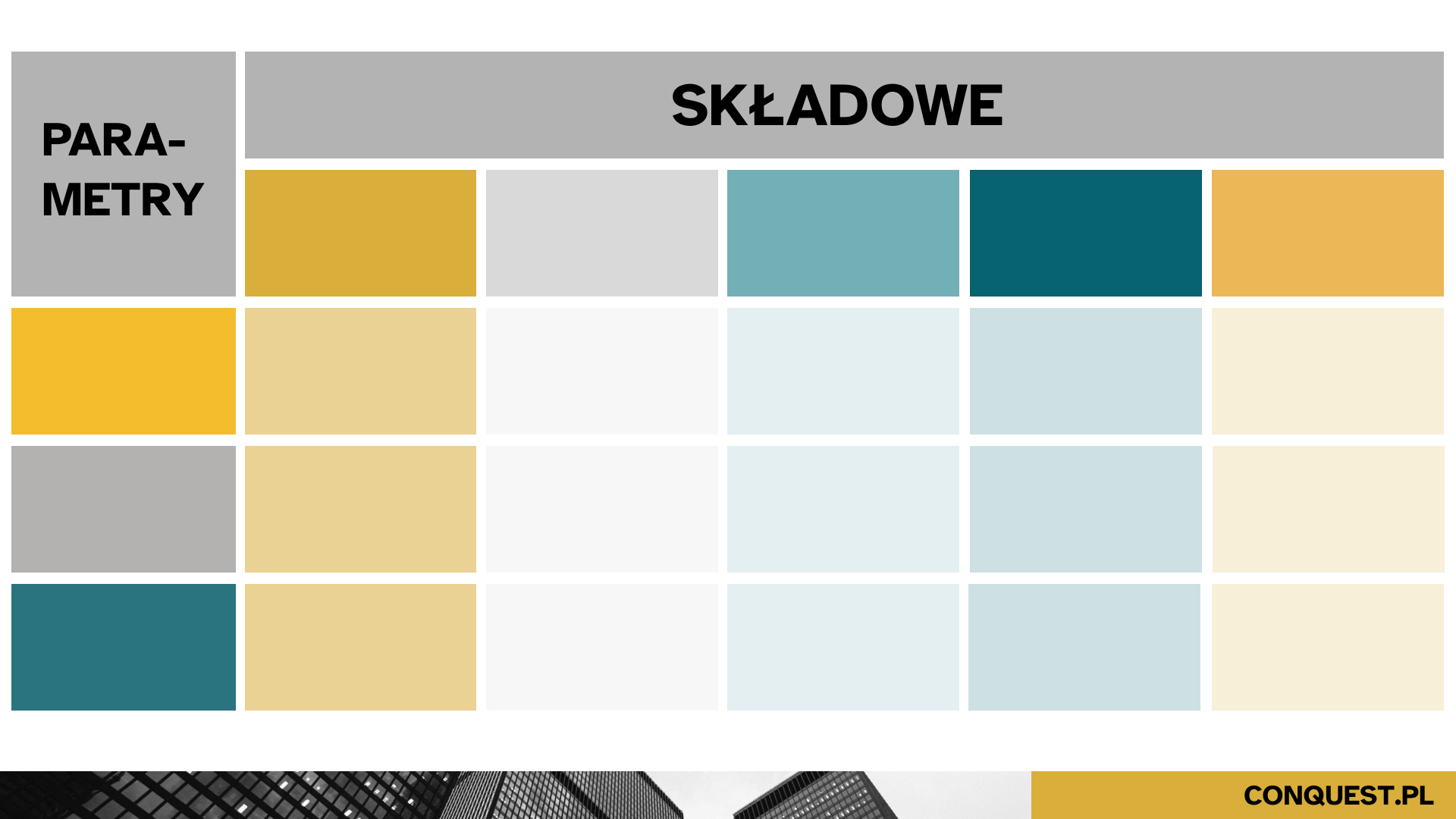04.02.2022
How can morphological analysis help your brand?
Key information:
- Morphological analysis, developed by Fritz Zwicky, has found applications in both physics and business.
- The method includes three phases: recognition, analysis and synthesis of the problem to ensure its full understanding and solution.
- The process of morphological analysis stimulates creative thinking, helping teams explore a variety of possibilities for solving a problem.
- Morphological analysis can generate innovative ideas and differentiate a brand in a competitive market.
- Strategic use of morphological analysis allows companies to identify unique solutions and create customer value.
- It is essential to recognize, analyze and identify the parameters of the problem, leading to innovative solutions.
- With the ability to adapt quickly to changing conditions, this method gives companies a competitive advantage.
- While not all ideas from morphological analysis are practical, they can uncover new opportunities that are beneficial to the company.
Details below!

What is morphological analysis?
Morphological analysis was first carried out by Swiss astrophysicist Fritz Zwicky. The tool is a problem-solving method, so that despite its initial use in physics, it quickly found its way into business decision-making as well.
How to perform a morphological analysis?
First phase - identification of the problem
The entire process of morphological analysis takes place in three phases. The first part of the analysis consists of carefully defining the problem and determining what the difficulty is. These steps are primarily aimed at overcoming the natural tendency to narrow down the problem. This is an extremely important point due to the fact that a wrong definition of the problem will hinder our ability to solve it correctly and quickly, as well as prevent us from drawing correct conclusions from the analysis.
Phase two - analysis of the problem
Its purpose is to define and identify the parameters of the problem, such as features, functions, interdependent factors or elements of the problem. The most common method used to support this stage of analysis is brainstorming.
Third phase - synthesis of the problem
The final phase of conducting a morphological analysis is to create a morphological array (matrix), which will show the juxtaposition of parameters and their states. Using this type of visualization, we can verify possible solutions, as well as realize solutions that have been overlooked so far. Methods to support this phase can be Monte Carlo method And Moles' discovery matrix.
Example of morphological analysis
Suppose you want to launch an innovative product or service, but you can't exactly define the target audience, destination and form of distribution. To solve this problem with the morphological analysis method, create a morphological table that looks like the following, for example.

Having created such a looking matrix, we are able to consider all possibilities for solving the problem. The cited example shows as many as 27 different combinations. It is estimated that on average about 95% of them are rejected at the very beginning of the analysis due to the commonness of the solution or its nonsensicality.
For a more detailed analysis, you can use the Moles' Discovery Matrix, which tabulates two parameters, for example, just the target group and the destination. This method proves particularly effective when we need to consider multiple parameters.
Advantages of morphological analysis
Morphological analysis allows you to discover new ideas. Despite the fact that most of them will probably turn out to be useless, the work put into this type of analysis can bring benefits that turn out to be opportunities to record above-average revenues.

Key solutions and innovation creation through morphological analysis
Using the fundamentals of morphological analysis, brands can break through the barriers of conventional thinking and develop entirely new and innovative solutions. The morphological method is particularly helpful in identifying and evaluating possible solution options, allowing companies to visualize and explore different parameter combinations.
With this approach, companies have the opportunity to create a model that reveals the most promising and creative development paths. This process is known as solution variant creation and is a key element in the method of creating new and unique market offerings. Holistic problem solving through problem identification methods and variant design solutions facilitates the achievement of creative solutions that are in line with market expectations and brand values.
Within the framework of morphological analysis that occurs, a diversity of approaches and techniques is crucial to ensure a broad spectrum of possibilities and avoid the usual patterns. The ultimate goal is to create innovations that can bring real benefits and competitive advantages to the market.
Expanding capabilities through morphological analysis
The use of morphological analysis can significantly increase the range of potential solutions for your brand, allowing you to identify unique opportunities and create innovative concepts. The use of this method enables a thorough and detailed understanding of all aspects of a problem, which can lead to creative and original solutions. It is extremely important that the process of morphological analysis is carried out in a systematic and consistent manner, taking into account all possible parameters and options for solving the problem.
Morphological box method: discovering innovative solutions
General morphological analysis is primarily used to create new combinations and solution models, and is based on the possibilities of combining different parameters. The morphological box method, which is one of the tools of morphological analysis, allows all combinations of solutions to be presented in a clear and organized manner, making it easy to analyze and evaluate them for relevance and feasibility for your brand. This holistic approach to problem solving enables you to identify the most promising courses of action that can bring the greatest benefit.

Inspiration and innovation: key elements of morphological analysis in business
The end goal of morphological analysis is not only to find an appropriate solution to a problem, but also to inspire the creation of new ideas and concepts. In a business context, the essence of morphological analysis lies in its ability to generate ideas for solutions that are both innovative and profitable. With the opportunities offered by the morphological analysis method, your brand has the chance to develop in a way that not only responds to current market needs and demands, but also anticipates future trends and changes, adapting to them in a proactive manner.
Strategic use of morphological analysis
The strategic application of morphological analysis can enable your brand to achieve a significant competitive advantage. Detailed morphological analysis uncovers custom and unique solutions that are key to developing a differentiating customer value proposition. The morphological analysis method is not only revealing in identifying new business opportunities, but also in detecting potential risks, allowing companies to adapt smoothly to changing market conditions and problem parameters.
Creative thinking through morphological analysis
Morphological analysis also serves as a powerful tool for stimulating creative thinking among team members. The process of morphological analysis requires breaking the usual thought patterns and exploring new perspectives, which leads to the creation of new combinations and variants for solving the problem.
The use of the morphological analysis method promotes deep reflection on the various aspects and possible parameters of a problem, which promotes the development of creative problem-solving competencies and can result in innovative products and services that will make your brand stand out in a crowd of competitors.
Transforming business thinking through morphological analysis
Morphological analysis, a tool designed by Swiss astrophysicist Fritz Zwicky, is a key method in the process of solving problems and generating innovations, being an invaluable aid in fields ranging from life sciences to business. The complex process of this analysis, which includes the phases of problem recognition, analysis and synthesis, is fundamental for uncovering deeply hidden innovative solutions and for unleashing creative thinking among teams.
This method can bring strategic advantages to brands, enabling the identification and exploration of unique solutions and customer value. Although many of the ideas gleaned from morphological analysis may be dismissed as impractical, the potential of this method to uncover new opportunities is limitless, opening the door to innovation and competitive advantage In the dynamic world of business.




